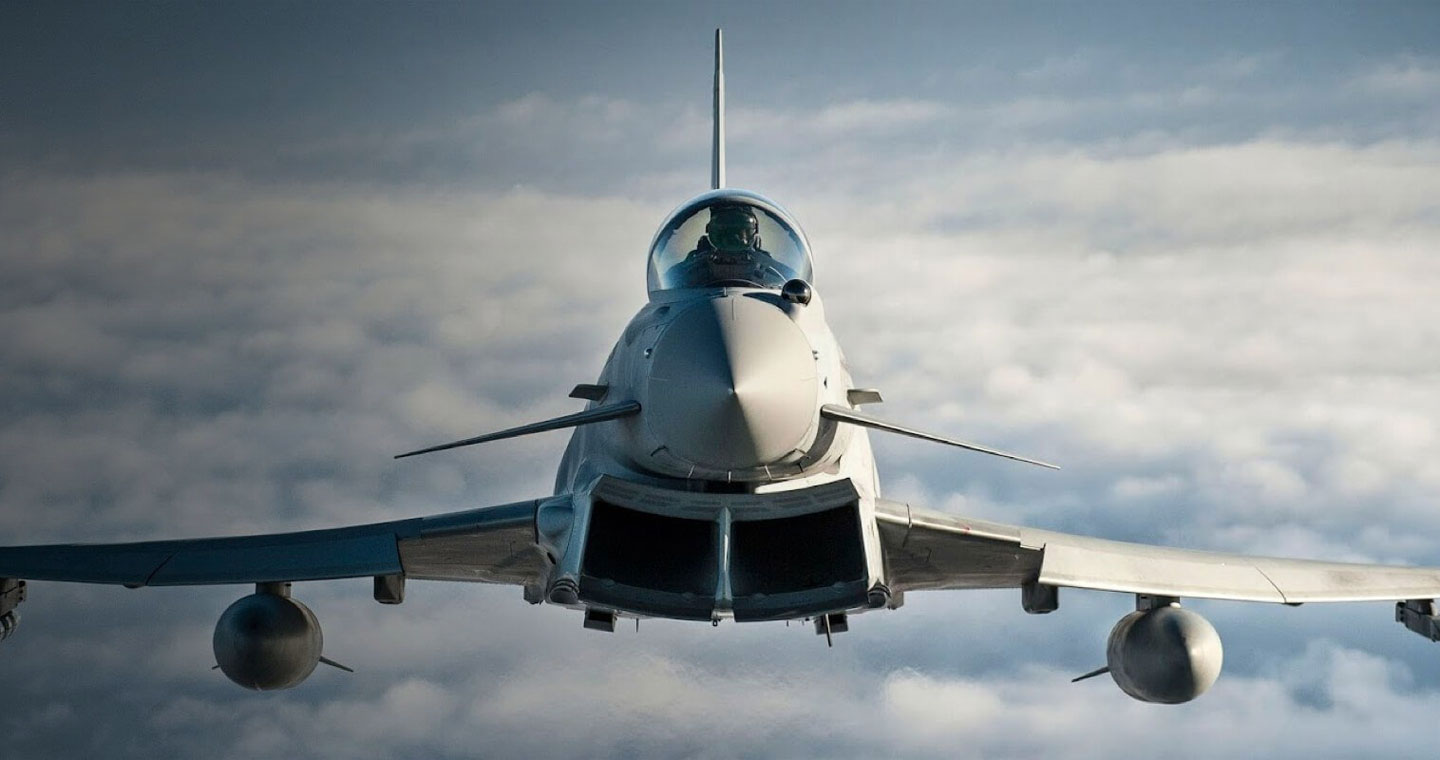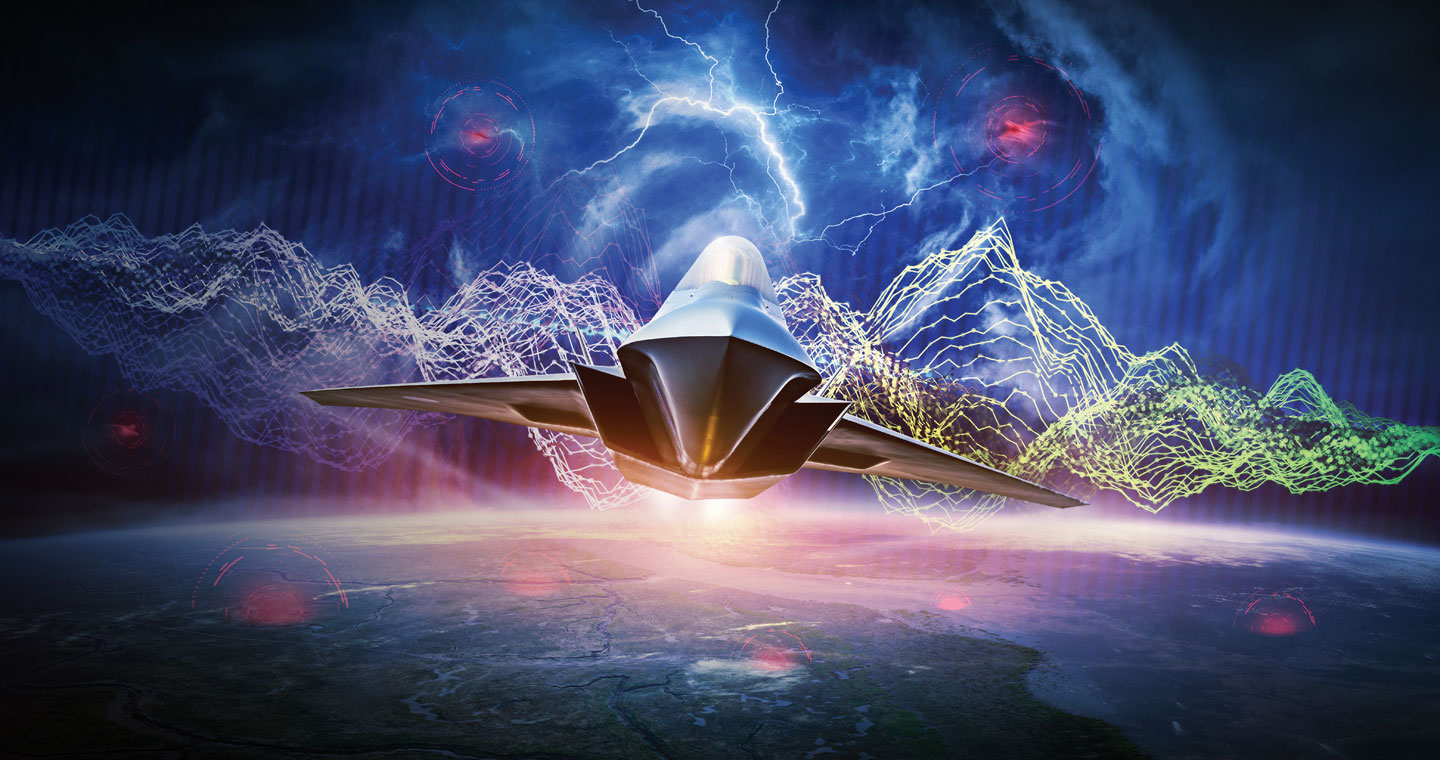Building the operational picture
“On and off, I was involved in flying missions from 1991-2004. Throughout that time, I was using a range of Electronic Warfare (EW) and targeting sensors which provided us with the information to make critical decisions for our own aircraft and the surrounding formation,” says Dave.
“Essentially, aircraft sensors perform similar tasks to our own human senses of seeing, hearing and sensing changes in environment. Ultimately, with anything you operate – be it a tank, ship or aircraft – you are trying to replicate those senses to understand your wider environment.”
Most missions involve many different types of aircraft, including fighters, bombers, ISR aircraft to identify anti-aircraft missile systems, jamming aircraft to suppress enemy defences, and command and control aircraft to provide the whole mission picture.
“The Tornados I flew were also equipped with a variety of sensors designed not only to jam the surface-to-air missile systems, but also to warn our aircrews of any incoming threats and then be able to deploy the requisite counter-measures,” he adds.
Much of this critical technology has been developed by Leonardo and its forerunners over the years, including the ‘Skyshadow’ self-protection ECM pod, the Radar Homing and Warning System (RHWR) and the Thermal Imaging Airborne Laser Designation (TIALD) targeting pod. The pride of the people involved in producing and using the technology – from the engineers and project managers through to the pilots – is what drives Leonardo teams in their pursuit of excellence.
“I think it is vitally important for all of us working at Leonardo, to remember that what we do together makes a genuine difference to the lives of those who go in harm’s way. I can honestly say the only reason I, and so many of those I served alongside, are here today, is because of the equipment that was designed and built by those working at what is now Leonardo.”
From the skies to strategic planning
After leaving his Squadron for the necessary ground tours, Dave applied the knowledge and experience he had gained in the field, at a strategic level with the UK Ministry of Defence (MOD). His first role involved capability planning – looking at what capability existed across the UK armed services at that time, considering the threats to the UK, identifying capability gaps and prioritising budgetary spend over the following five to ten years. He subsequently specialised in Electronic Warfare at the MOD, using much of his mission experience to consider what should be purchased for the Tornados and Typhoons, as well as for the UK’s fleet of helicopters and heavy aircraft.

“To counter the growing threat from Man Portable Air Defence Systems (MANPADS), we funded many Urgent Operational Requirements (UOR) to provide a variety of systems to protect our crews. One of the biggest UORs was for Directional InfraRed Counter Measures (DIRCM) for heavy aircraft, such as the Hercules and C17. That DIRCM programme was a joint UK and US project involving Northrop Grumman and Leonardo (BAE Systems Avionics at the time) in Edinburgh, an activity that continues to this day with our continued DIRCM partnership with Northrop Grumman and in the development of our own UK Miysis system,” explains Dave.
“Additionally, I was involved in early work with the United States on Integrated Defence Aids Systems, including Leonardo’s Aircraft Gateway Processor (AGP) for Apache. We also started concept work on Infra-Red Missile Warners with UK industry and Electronic Active Decoys (EAD) which subsequently became BriteCloud.”
A few years later, as the Head of UK EW Policy, Dave was closely involved with enhancing the UK’s capability to combat the threat of Radio Controlled Improvised Explosive Devices (RC-IED); very much working with Leonardo's Basildon business and other industrial partners in the further development of the ECM Force Protection technology.
Eventually, Dave moved from the MOD into an industry role, focusing on Export Sales and Business Development, before joining Leonardo in 2016.
Increasing integration with each generation of fast jet
Looking back at the development of technology over the past 30 years, the difference is stark, according to Dave. “When I was flying, the pilot and I were the central processing unit for the sensors. While we had all these sensors on the aircraft, none of them really talked to each other. The crew fused the data and then acted upon it.”
By contrast, today, the Typhoon’s sensor systems now advise the pilot what the best manoeuvre to fly is, while automatically conducting jamming and dispensing chaff, rather than the pilots having to work it all out themselves. Building on this excellent sensor fusion, the latest RAF Typhoon radar, the ECRS Mk2 being developed by Leonardo, will provide UK Typhoons with a world-leading Active Electronically Scanned Array (AESA) technology that includes wide band Electronic Attack that will provide very advanced Suppression of Enemy Air Defence capability.

“The Typhoon has all of its own sensor capabilities integrated, but the pilot and the formation will still be coordinating with other assets via radios and data links,” explains Dave. “As we progress to the next stage with Tempest and the Future Combat Air System (FCAS), the multi-function radar and defence aids system will take integration and sensing to the next level. Not only thinking and adapting itself to the threat environment, it will operate as a system of systems making decisions based on the sensing across all the assets that once had to talk on a traditional radio net and then make individual tactical manoeuvres. This will enable the entire mission, consisting perhaps of many aircraft and platforms, to think and act as one, with much lower workload than we had when we flew. This is also why autonomy and the use of uncrewed systems will increase and enable aircrews to keep further away from the high threat areas.
“All this will significantly reduce the workload of those in the pilot’s seat and keep them safe,” says Dave, “and give tomorrow’s aviator the ability to gain information advantage in the congested battlespace of the future.”

